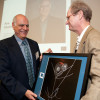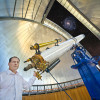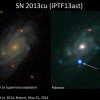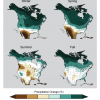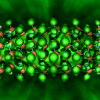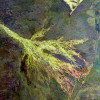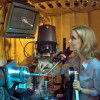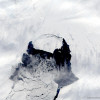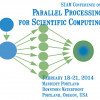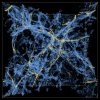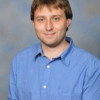News Center
Arie Shoshani Retiring After 38 Years Managing Big and Bigger Data
For 38 years, Arie Shoshani has been ahead of the curve in managing scientific data, leading the lab's Scientific Data Management Group and serving as the lead for three SciDAC projects to develop new approaches for managing data. Over the course of his career, he has become an internationally recognized expert on creating, organizing and sharing scientific datasets. In August 2013, Shoshani's contributions to the scientific community were recognized with the Berkeley Lab Prize for Lifetime Scientific Achievement. Read More »
Peter Nugent Appointed Division Deputy for Scientific Engagement
Peter Nugent has been appointed Deputy for Scientific Engagement in Berkeley Lab’s CRD. In his new role, Nugent will work with CRD and Computing Sciences leadership to develop and implement a strategy for engaging with other Berkeley Lab scientific divisions in need of computational solutions for data-intensive science projects. He will also act as a facilitator for these inter-divisional collaborations. Read More »
Multidimensional Image Processing and Analysis in R
An esoteric, open-source programming language—called R—could pave the way for open science. Thousands of scientists are participating in the R development community, including CRD's Talita Perciano. As a student, she contributed one of the first image-processing tools—called R Image Processing Analysis (RIPA)—to the community. Now with big science datasets in mind, she’s updated the existing tool with improved features for complex data analysis. Read More »
Confirmed: Stellar Behemoth Self-Destructs in Type IIb Supernova
For the first time ever, astronomers have direct confirmation that a Wolf-Rayet star died in a violent explosion known as a Type IIb supernova. Using the iPTF pipeline, researchers caught supernova SN 2013cu within hours of its explosion. These observations are providing valuable insights into the life and death of the progenitor Wolf-Rayet. These stars are interesting because they enrich galaxies with the heavy chemical elements that eventually become the building blocks for planets and life. Read More »
Berkeley Lab Climate Scientist: More Extreme Heat and Drought in Coming Decades
By the end of this century climate change will result in more frequent and more extreme heat, more drought, and fewer extremes in cold weather in the United States. Average high temperatures could climb as much as 10 or more degrees Fahrenheit in some parts of the country. These are some of the projections made by Berkeley Lab climate scientist Michael Wehner and his co-authors on the National Climate Assessment (NCA). Read More »
To Bridge LEDs’ Green Gap, Scientists Think Small…Really Small
Nanostructures half the breadth of a DNA strand could improve the efficiency of light emitting diodes (LEDs), especially in the “green gap,” a portion of the spectrum where LED efficiency plunges, simulations at the U.S. Department of Energy’s National Energy Research Scientific Computing Center (NERSC) have shown. Read More »
CRD’s John Shalf Discusses Big Data with White House Staff
John Shalf, head of CRD’s Computer and Data Sciences Department, was one of four national lab representatives to meet with President Obama’s chief of staff and members of the Office of Science and Technology Policy (OSTP), Office of Management and Budget (OMB) and other agencies to discuss the intersection of big data architecture requirements and exascale challenges. Read More »
Human-induced climate change reduces chance of flooding in Okavango Delta
Researchers at the University of Cape Town, Berkeley Lab and the United Nations Development Programme have analyzed how human-induced climate change has affected recent flooding in an ecologically and geographically unique river basin in southern Africa—the Okavango River. After running a number of simulations, they found that greenhouse gas emissions have substantially reduced the chance of the floods in the region. Read More »
A New Mathematics for Experimental Science
In the age of high-resolution detectors and international research collaborations, math has the potential to transform science and accelerate discovery. But this work will require state-of-the-art mathematics, carefully crafted in inventive new ways. That’s where the Department of Energy’s new Center for Applied Mathematics for Energy Research Applications (CAMERA) comes in. Read More »
Simulations Shed Light on Pine Island Glacier’s Stability
The rapid retreat of Antarctica’s Pine Island Glacier has perhaps reached a point of no return, say three international modeling teams who ran a number of simulations to model the glacier’s behavior. To do this work, they relied on three different ice-flow models including BISICLES, which was developed by a collaboration that included Berkeley Lab computational scientists. Read More »
Seeing the Great Lights of Europe: A Study in Approaches to Synchrotron Data Management and Analysis
Last month, David Brown and Craig Tull of the Computational Research Division (CRD) and Alex Hexemer of the Advanced Light Source went on a 10-day tour of Europe's light sources. Their stops included, Garching, Karlsruhe, Villigen, Hamburg and Oxford. Read More »
CRD, NERSC Staff Present at SIAM Conference on Parallel Processing for Scientific Computing
Dozens of scientists from Berkeley Lab’s Computational Research and National Energy Research Scientific Computing divisions are presenting their research this week at the Sixteenth Conference on Parallel Processing for Scientific Computing. Read More »
Saye and Sethian’s Bubble Visualization Honored by 2013 Visualization Challenge
A visualization created by Berkeley Lab mathematicians Robert Saye and James Sethian of soap bubbles bursting and reforming has won honorable mention in the 2013 International Science and Engineering Visualization Challenge, sponsored by Science magazine and the National Science Foundation. Read More »
Edison Early Users Deliver Results
Two Berkeley Lab computational researchers were among those who pushed the limits of NERSC's new Edison supercomputer while making advances in their fields. Read More »
Berkeley Lab Mathematicians Develop Framework for Nanocrystallography Analysis
Jeffrey Donatelli and James Sethian develop mathematical tools to improve the reconstruction of images in the emerging field of X-ray nanocrystallography. Read More »









